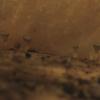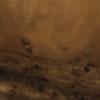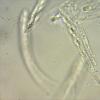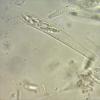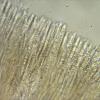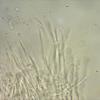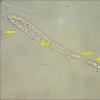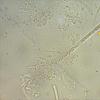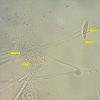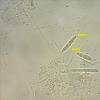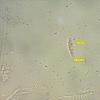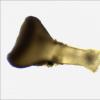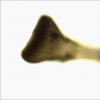
30-12-2025 17:14
 Bernard CLESSE
Bernard CLESSE
Bonjour à toutes et tous,Pourriez-vous aider Albe

29-12-2025 10:15
Hulda Caroline HolteHello, I found and collected this propoloid ascom

30-12-2025 16:44
Pascal DucosBonjour,Une anamorphe rose stipitée, très nombre

30-12-2025 09:04
Hello.A Pyrenomycete sprouting sparsely but very d

29-12-2025 17:44
Isabelle CharissouBonjour,J'aimerais savoir si d'autres personnes au

12-11-2021 00:03
Lepista ZacariasHi everybody,A week ago in my fiels trip I noticed

29-12-2025 17:12
 Bernard CLESSE
Bernard CLESSE
Bonjour à toutes et tous,Pourriez-vous m'aider à
Cyathicula cyathoidea???
William Slosse,
28-12-2016 21:23
 On a dead stem of Urtica dioica growing just above a Crepidotus luteolus. I thought Cyathicula cyathoidea but the spores doesn't fit the plate. Prepared in h²o
On a dead stem of Urtica dioica growing just above a Crepidotus luteolus. I thought Cyathicula cyathoidea but the spores doesn't fit the plate. Prepared in h²oCan anyone give me a clue?
Hans-Otto Baral,
28-12-2016 21:36

Re : Cyathicula cyathoidea???
Did the apos have any marginal teeth? Were they long-stalked or not?
Vivien Hodge,
29-12-2016 09:26
Re : Cyathicula cyathoidea???
Hi William/Zotto
I wonder if this could be Crocreas (Cyathicula) cyathoideum var. cacaliae, which can apperently have larger spores than the type and larger than given in E&E.
I found something that looked similar in the UK in 2013 with spores of up to 19.75, measurements taken from spore print - this is essential as they can be larger when simply squashed from the asci. Ref. was the Monograph of Crocicreas by S. C. Carpenter 1981 but I do not actually have a copy so cannot check the full spore range given for the variety.
Vivien
I wonder if this could be Crocreas (Cyathicula) cyathoideum var. cacaliae, which can apperently have larger spores than the type and larger than given in E&E.
I found something that looked similar in the UK in 2013 with spores of up to 19.75, measurements taken from spore print - this is essential as they can be larger when simply squashed from the asci. Ref. was the Monograph of Crocicreas by S. C. Carpenter 1981 but I do not actually have a copy so cannot check the full spore range given for the variety.
Vivien
Hans-Otto Baral,
29-12-2016 10:41

Re : Cyathicula cyathoidea???
C. cacaliae in Carpenter has spores (5)9-14(17) x (1.5)2-2.5(3) µm. The present ones are 15-16 x 2.7-4 µm. Also, C. cacaliae has a low oil content while this one has a very high content.
William Slosse,
29-12-2016 18:24
Hans-Otto Baral,
29-12-2016 20:41

Re : Cyathicula cyathoidea???
It is quite rare that C. coronata occurs without teeth, or possibly it is a separate species, but this is unclear and perhaps undescribed.



